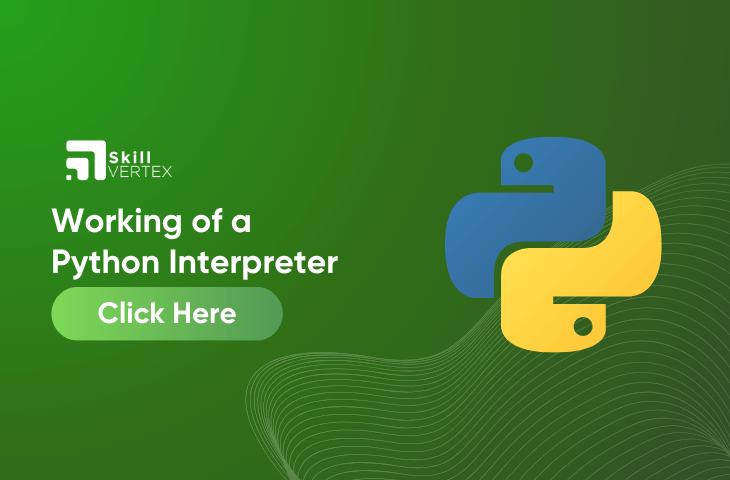Table of Contents
How Does A Python Interpreter Works?
Python is known as an interpreter-based language. This article will tell you more about the working of Python Interpreter.
What is Python?
Python is considered an object-oriented programming language such as Java and Python. Python is referred to as an interpreted language. Python will take advantage of code modules that can be interchanged instead of the list of instructions.
Therefore, the standard implementation of Python is known as “CPython”. This is mostly used for the implementation of Python.
How does a Python Interpreter work?
Python won’t translate code into machine code, that is how the hardware will work. Instead, they will translate into something called Byte code. Hence, compilation will occur within the Python.
They will convert into byte code and this code won’t be understood by the CPU. Therefore, it requires an interpreter known as the Python virtual machine to run the byte codes.
How is Python Source Code translated into Executable Code?
Python code should follow the steps provided below to produce an executable code :
Step 1: The Python compiler will read a Python source code. Initially, the execution of the code will begin.
Step 2: The Python file will be stored as a .py file after writing the Python code. These instructions are scripted by a Python script.
Step 3: Source code is translated into byte code. Additionally, the Python compiler will monitor the syntax error and will produce a .pyc file.
Step 4: Byte code which is represented as the .pyc file and then it’s transferred into the Python Virtual Machine. Python Virtual Machine (PVM) is also known as the Python Interpreter. PVM will translate the Python Byte code into the machine-executable code.
In this process, the interpreter will read and then run the given file line. However, if there is an error during this interpretation, then the conversion will be stopped along with an error message.
Step 5: The Bytecode will be translated into the machine code. Machine code consists of the binary language (0 and 1). This binary language can be read by the CPU and is then optimized for the machine code.
Step 6: Hence, the final execution will happen when the CPU will run the machine code. Then, the output will be produced.
How Does Python Work Internally?
Code Editor: The Code Editor is the first level of the program where the source code is written. It is a human-readable code that is written with the help of Python syntax code. The execution of this program will begin in this process.
Source Code: The code that is scripted by the programmer in the code editor is stored as .py life in a system. The Python file will be written in a language that is read by humans and contains instructions for the computer.
Compilation Stage: The compilation stage of Python will be very different from the other programming language. Python will convert a source code into the byte code.
In this process, the Python compiler will monitor the syntax errors. However, if they couldn’t detect any error. Then, a .pyc file will be produced which has bytecode.
Python Virtual Machine: The bytecode will reach the main part of conversion which is the Python Virtual Machine (PVM). PVM is referred to as the main run-time engine of Python.
PVM is considered an interpreter that will read and run the bytecode file, line by line. Thereafter, it will convert the byte code into the machine code.
Running Program: The CPU will run the provided machine code and the output of the program will function as the performing task and computation that will be scripted at the start of the code editor.
Python Libraries
Python will monitor the given module which is built-in and then run the C Code. Whereas, if the module is not built-in, then the directories list will be defined as the sys.path.
Python will generate a new module object. This module consists of a variable and functions from the file. They will use module objects for accessing several things. After running the code in the.py file in the object’s namespace. Thus, python will convert source code into byte code which makes the execution faster.
How Does A Python Interpreter Works-FAQs
Q1. What are the two ways of Python interpreter?
Ans. Interactive mode and scripted mode are the two ways.
Q2. What is the best Python interpreter?
Ans. IDLE, Visual Studio Code, SublimeText3, and Py Charm are among the best Python interpreters.
Q3. Where to get a Python interpreter?
Ans. It can be installed from the Microsoft Store.
Hello, I’m Hridhya Manoj. I’m passionate about technology and its ever-evolving landscape. With a deep love for writing and a curious mind, I enjoy translating complex concepts into understandable, engaging content. Let’s explore the world of tech together

